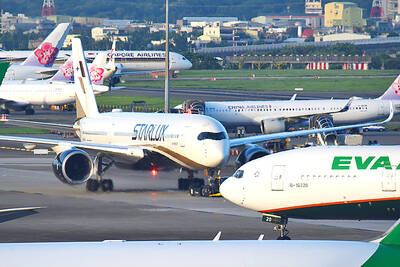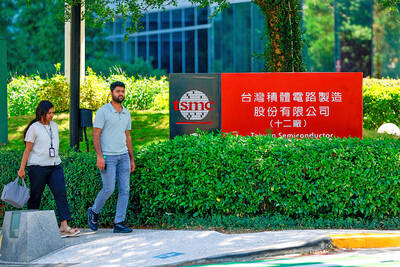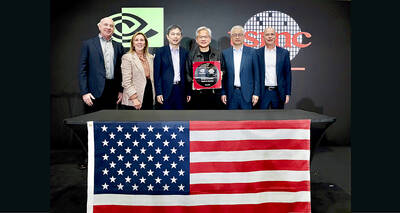US consumers and businesses may get more options in wireless service starting next year, with the launch of a new wireless broadband network that aims to provide competition to the incumbent phone companies.
Private-equity firm Harbinger Capital Partners on Tuesday revealed details of the launch of its wireless network, LightSquared, which should cover 92 percent of the population by 2015.
There are financial and regulatory hurdles to overcome, however, and in another wrinkle, LightSquared won’t initially be offering conventional cellphone service, just data. It’s possible to send phone calls over data connections, but that technology is not fully mature or standardized.
Still, LightSquared represents a rare new entrant in the wireless market. Only two other companies, Verizon Wireless and AT&T Inc, have firm plans to build nationwide networks using the same, fourth-generation network technology that LightSquared will use.
Sprint Nextel Corp, through its Clearwire Corp subsidiary, is building a third one with a different 4G technology that’s likely to get less support from equipment makers.
Consumers won’t buy service directly from LightSquared. Instead, it will sell access wholesale to other companies that can resell it to consumers. LightSquared hopes to attract cable TV providers, phone companies that don’t have wireless networks of their own and retailers that want to provide wireless service under their own brand.
Dan Hays, who focuses on telecommunications with consulting firm PRTM, said LightSquared “could provide a renewed opportunity for retailers and major brands such as Wal-Mart, Best Buy, and Office Depot to enter the wireless market as service providers to consumers.”
LightSquared plans to start providing service in the second half of next year in Las Vegas, Phoenix, Denver and Baltimore.
LightSquared said Nokia Siemens Networks will build, maintain and operate the network under a US$7 billion contract.
The contract is an important step for Nokia Siemens, which hasn’t had much of a presence in the US market for wireless equipment. On Monday, it announced a deal to buy Motorola Inc’s networks business for US$1.2 billion, with a view to increasing its foothold in the US.
One reason it’s rare for new national wireless carriers to spring up is that it’s difficult and expensive to procure the rights to airwaves across the nation. Verizon Wireless paid US$9.4 billion for nationwide spectrum rights in a 2008 auction, for example.
LightSquared is in an unusual position in that it owns nationwide wireless spectrum once set aside for satellite phone use. Harbinger bought SkyTerra, a satellite company, earlier this year.
Placing calls over satellites is expensive and impractical compared with using cell towers, so the Federal Communications Commission (FCC) allows spectrum holders to back up satellite coverage with towers. That gives LightSquared a “back door” to building out a conventional ground-based network of cell towers.
However, under current FCC rules, all devices that use LightSquared’s spectrum have to come with the ability to connect to a satellite besides conventional cell towers, according to satellite industry consultant Tim Farrar. That would add to the cost of devices and limit the selection.

RECYCLE: Taiwan would aid manufacturers in refining rare earths from discarded appliances, which would fit the nation’s circular economy goals, minister Kung said Taiwan would work with the US and Japan on a proposed cooperation initiative in response to Beijing’s newly announced rare earth export curbs, Minister of Economic Affairs Kung Ming-hsin (龔明鑫) said yesterday. China last week announced new restrictions requiring companies to obtain export licenses if their products contain more than 0.1 percent of Chinese-origin rare earths by value. US Secretary of the Treasury Scott Bessent on Wednesday responded by saying that Beijing was “unreliable” in its rare earths exports, adding that the US would “neither be commanded, nor controlled” by China, several media outlets reported. Japanese Minister of Finance Katsunobu Kato yesterday also

China Airlines Ltd (CAL, 中華航空) said it expects peak season effects in the fourth quarter to continue to boost demand for passenger flights and cargo services, after reporting its second-highest-ever September sales on Monday. The carrier said it posted NT$15.88 billion (US$517 million) in consolidated sales last month, trailing only September last year’s NT$16.01 billion. Last month, CAL generated NT$8.77 billion from its passenger flights and NT$5.37 billion from cargo services, it said. In the first nine months of this year, the carrier posted NT$154.93 billion in cumulative sales, up 2.62 percent from a year earlier, marking the second-highest level for the January-September

‘DRAMATIC AND POSITIVE’: AI growth would be better than it previously forecast and would stay robust even if the Chinese market became inaccessible for customers, it said Taiwan Semiconductor Manufacturing Co (TSMC, 台積電) yesterday raised its full-year revenue growth outlook after posting record profit for last quarter, despite growing market concern about an artificial intelligence (AI) bubble. The company said it expects revenue to expand about 35 percent year-on-year, driven mainly by faster-than-expected demand for leading-edge chips for AI applications. The world’s biggest contract chipmaker in July projected that revenue this year would expand about 30 percent in US dollar terms. The company also slightly hiked its capital expenditure for this year to US$40 billion to US$42 billion, compared with US$38 billion to US$42 billion it set previously. “AI demand actually

Jensen Huang (黃仁勳), founder and CEO of US-based artificial intelligence chip designer Nvidia Corp and Taiwan Semiconductor Manufacturing Co (TSMC, 台積電) on Friday celebrated the first Nvidia Blackwell wafer produced on US soil. Huang visited TSMC’s advanced wafer fab in the US state of Arizona and joined the Taiwanese chipmaker’s executives to witness the efforts to “build the infrastructure that powers the world’s AI factories, right here in America,” Nvidia said in a statement. At the event, Huang joined Y.L. Wang (王英郎), vice president of operations at TSMC, in signing their names on the Blackwell wafer to